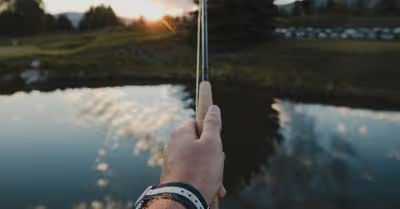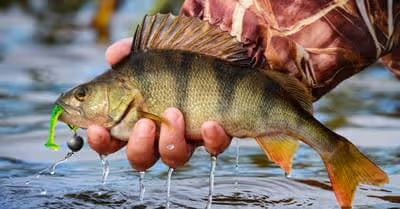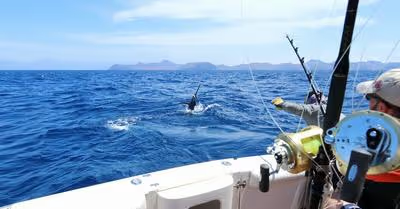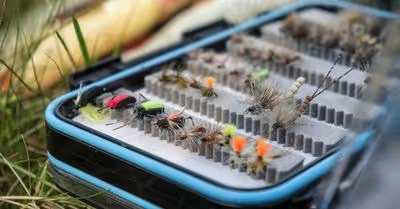Table of Contents
How To Choose The Right Hook
Before you start learning about the different ways to hook a minnow, you need to know there are a variety of different hooks available.
When I first started fishing I thought a hook was a hook. I grabbed a pack at my local tackle shop, matched the size of the hook to the bait, and casted out.
I didn’t try to over complicate fishing- I still try not to today.
However, there are a variety of hooks and a number system used to make sure you choose wisely.
Lets go over some of the more popular hooks.
Aberdeen Hook
The aberdeen is probably the most widely known hook and what I imagine most recreational anglers have in their tacklebox. It has an elongated shank and a wide gap makes it a popular choice to hook minnows.
Octopus Hook
The octopus hook is another popular hook, especially with bass fishers. It has a wide gap and short shank. This is a pretty universal hook, but is a common hook for minnows. Added bonus the hooks are thin and set nicely into a fish.
Circle Hook
Circle hooks are commonly used by catch and release fishers. It securely hooks minnows, but due to the shape of the hook the fish can eat your minnow, but not the hook. When the game fish is done eating your minnow, it should swim away allowing the hook to set nicely in the corner of the mouth. This usually, prevents any serious injuries or death.
Hook Size
You also want to pick the right hook size. There is a number system advanced fishers know and use. Like picking a #4 to 1/0 for an average size minnows.
But for the average fisher, this over complicates fishing. Picking the right hook is fairly straightforward and common sense.
If the hook is so small it barely hooks the minnow, then it is too small. If it is so large that it instantly kills the minnow or can’t be concealed by the minnow then it is too big.
Regardless of which size you choose, make sure you pick a thin wire hook. This allows minnows to swim freely and stay alive longer.
Picking the right hook may involve some trial and error. However, within a few fishing trips you should be a pro.
Tackle And Gear
When using minnows as bait you want to make sure you pick the right tackle. This includes fishing line, weights, and bobbers.
This can help assure you that your minnow is swimming freely and presents realistically.
Fishing Line
You will want to avoid heavy or braided lines. These lines can prevent or alter the way the minnow swims.
Look for thin and light lines. I generally use a 6-8 pound test and it works fine for me.
Weights
Weights can be used in a variety of different ways. However, depending on the way you hook your minnow you may want to completely omit weights.
If you plan on using weights, look at rigs such as the three way or a split shot. This will keep the minnow down, but still allow the minnow plenty of line to swim.
Bobbers
Fishing minnows with a bobber is fairly simple. Just attach the minnow to a hook and then attach a bobber to your line.
Cast out. The bobber will suspend the minnow, but allow the minnow to swim and look natural.
Hooking The Minnow
Now that you have a basic understanding of the hooks and tackle used, let's talk about ways to hook the fish.
Remember the biggest thing is to make sure you can present a live minnow so the game fish will attack.
You also do not want to kill the minnow off quickly. The longer your bait is in the water the better your chances of hooking a lunker are.
Dorsal Hook
This is my preferred way to hook a minnow, so I will start here. It is a simple and effective way to hook the minnow.
You place a hook through its back slightly in front of the dorsal fin. Remember you need to avoid the spine.
If you avoid the spine, the fish should live for a while.
The minnow is also able to swim freely and present well to gamefish.
This is my go to method when ice fishing.
Hooking It Through The Mouth
Another method, which is very secure and guaranteed to land you a fish, hooking the minnow in its mouth.
Basically, you want to insert the tip of the hook through the lower portion of the jaw. Then the hook comes out the top portion of the jaw.
The mouth method allows the minnow to swim freely. However, this can prevent the minnow from drawing water into its gills, which will cause the minnow to die faster than other methods.
Using the method usually offers a good hook set on the game fish since they typically attack the head first.
This is also a common method for people who are repeatedly casting their minnows.
Hooking It Through The Tail
With this method you hook a minnow through the tail, just in front of the tail fin. The minnow will be able to swim freely and has a low mortality rate.
Like I mentioned above, gamefish typically attack the head first. So with this method you may get a lot of bites, with no hook set.
I find myself pulling out half eaten minnows with this set up. That being said, I have caught some large bass using the tail method.
This is an example of a method where you will want to avoid any added weights, because it will alter the way the fish swims.
Hooking It Through The Head
For this method you will want to insert the hook through the head, between the eyes. The tip of the hook will then exit near the mouth.
This is a great method to present a lively minnow and the hook is in the head.
Bonus, it is a very secure method as well.
Gill Method
The final method is to insert the hook into the mouth and have it come out right behind the gill.
This is probably the most secure method and is great if plan on using the same minnow for a couple of casts.
The hook is also near the head, so you should get a strong hook set.
However, this method kills off minnows the fastest.
Casting Minnows
Anyone who has ever fished with live bait, can attest to the frustration felt when you cast out your bait only to see the bait fly in the opposite direction of your hook.
When using lures you can cast as far and as hard as you desire. There is no fear or worries of the “bait” falling off the hook, because they are attached.
However, with minnows this isn't the case. No matter which hook you pick and which method you use, if you cast hard and far you will lose minnows.
To cast a minnow you will want a gentle lob into the water. Rather than looking for distance look for a spot with good cover for game fish to hide.
Time In Water
No matter which method you use your minnow will eventually die. So make sure you check your minnow every 10 minutes or so.
Putting It All Together
Like I said fishing with minnows isn’t rocket science. However, you do need to take extra steps to make sure you can present a lively fish.
Take your time and don’t get frustrated. You will lose countless minnows and fish, before you get the hang of it.
Also, try all the different methods and hooks. Eventually, you will find one that works for you.
Recent Articles
















